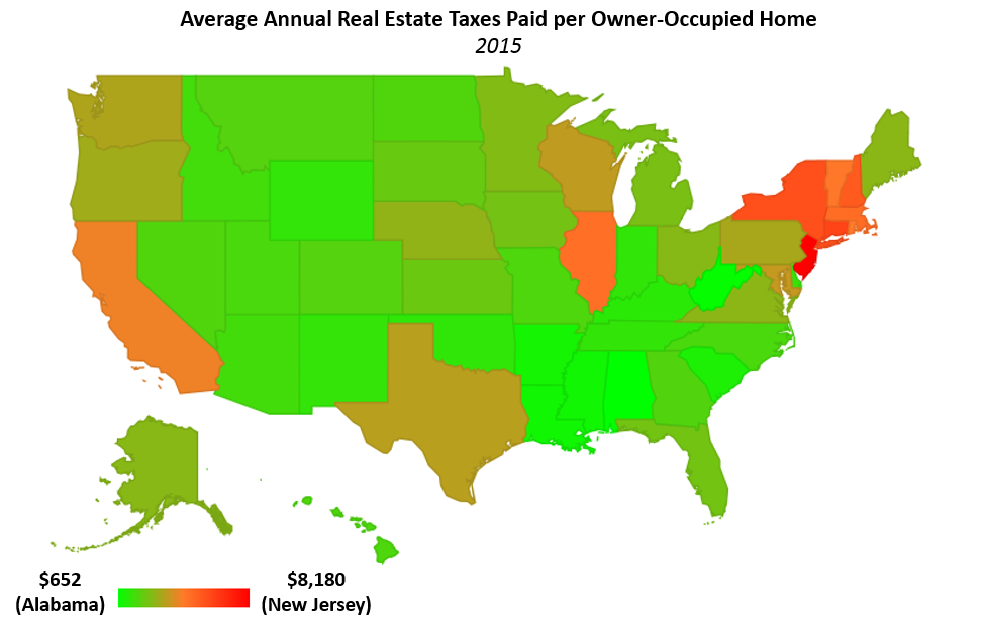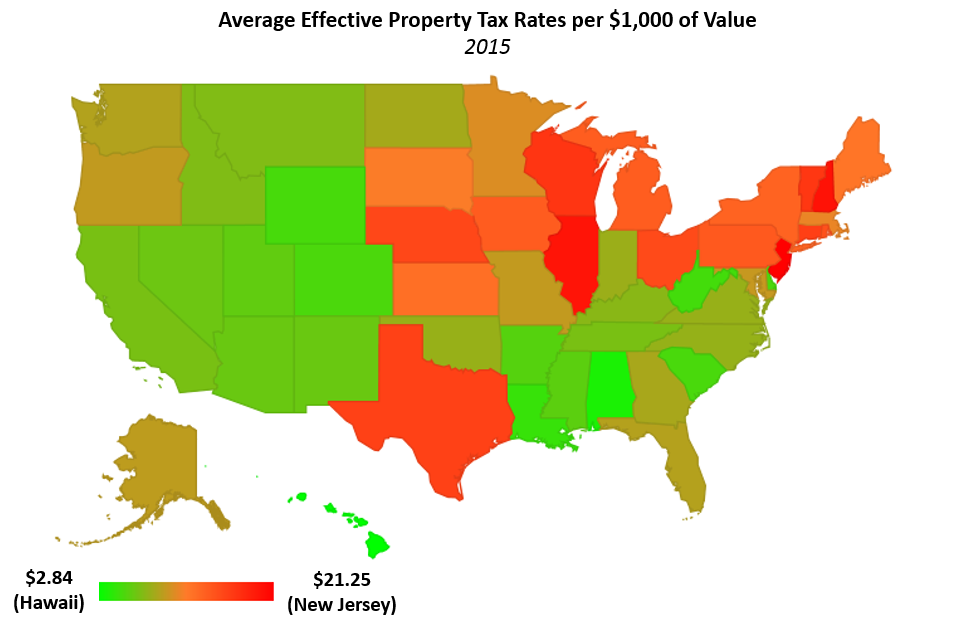The 2015 American Community Survey data shows that New Jersey still leads the nation with the highest average annual real estate tax (RET) bill of $8,180—$7,528 more than RETs paid by Alabama’s homeowners. The overall distribution remained roughly unchanged since 2014, as the composition of the top and bottom ten remained the same. The map below clearly illustrates that the highest property tax states are found in the Northeast while—with the exception of Texas—southern states boast the lowest RET bills for their resident homeowners.

Source: U.S. Census Bureau, 2015 American Community Survey, NAHB calculations
As property values vary widely by state, controlling for this variable produces a more instructive state-by-state comparison. In keeping with prior analyses, NAHB calculates this—the effective property tax rate as measured by taxes paid per $1,000 of home value—by dividing aggregate real estate taxes paid by the aggregate value of owner-occupied housing units within a state. As shown below, New Jersey has the dubious distinction of imposing the highest effective property tax rate—2.13% or $21.25 per $1,000 of home value. Hawaii levies the lowest effective rate in the nation—0.28%, or $2.84 per $1,000 of value.

Source: U.S. Census Bureau, 2015 American Community Survey, NAHB calculations
Interstate differences among home values explain some, but not all, of the variance in real estate tax bills across the country. Texas is an illustrative example of a state in which home values hardly, if at all, explain real estate tax bills faced by homeowners. While Texas ranks only 32nd in the country for average home values, it is 12th in average real estate taxes paid. Other factors are clearly at play, and state and local government financing turns out to be a major one.
Property taxes account for 35% of state and local tax receipts, on average, but some state and local governments rely more heavily on property taxes as a source of revenue than others. Texas serves as an excellent example once again. Unlike most states, Texas does not impose a state income tax on its residents. Even though per capita government spending is tame compared with other states—7th lowest in the country—Texas and its localities must still find a way to fund government obligations. Local governments accomplish this by levying the 7th highest effective property tax rate (1.63%) in the country, on average. The state government partly makes up for foregone individual income tax revenue by imposing a tax on corporate revenue rather than income
